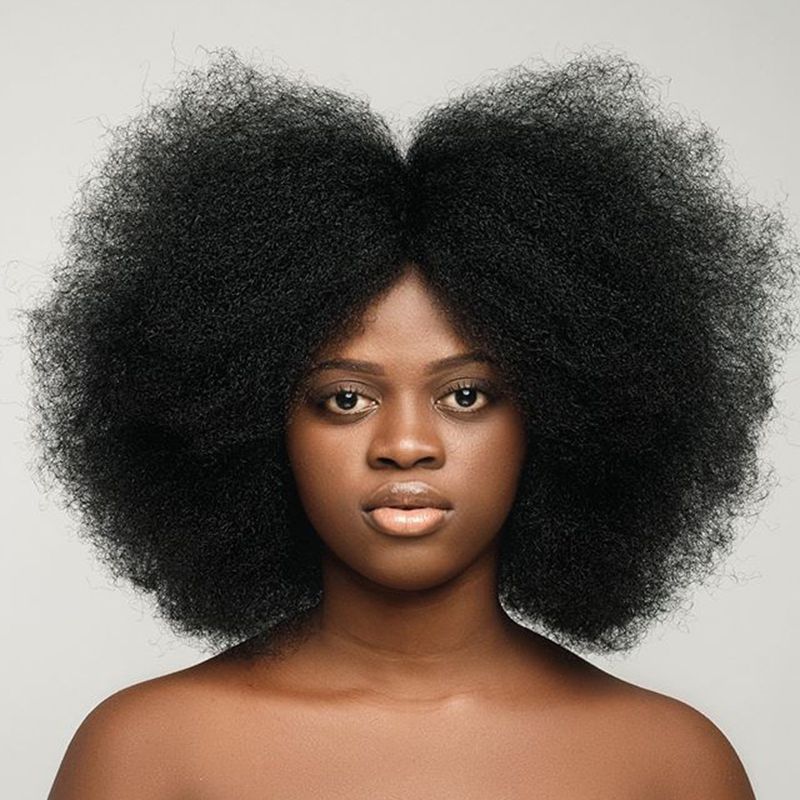The Ultimate Guide to Growing and Nurturing Kinky and Curly Hair

Growing kinky and curly hair is a beautiful journey that celebrates the natural texture and uniqueness of your hair. However, it does require specific care routines, patience, and the right products to help your hair thrive. Whether you're starting your natural hair journey or looking to improve your current regimen, this guide will provide you with essential tips and tricks to grow healthy, strong, and long kinky and curly hair.
Understanding Kinky and Curly Hair
Kinky and curly hair types are characterized by their tight curls or coils, which can range from soft waves to springy corkscrews. This type of hair tends to be drier than other hair types because the natural oils produced by the scalp have a harder time traveling down the hair shaft. As a result, kinky and curly hair can be prone to dryness, breakage, and shrinkage, making proper care essential for growth.
1. Moisture is Key
One of the most important aspects of growing kinky and curly hair is maintaining moisture. Because this hair type is naturally dry, it’s crucial to keep it hydrated.
-
Deep Conditioning: Incorporate deep conditioning into your weekly routine. Use a hydrating deep conditioner that contains natural oils like avocado oil, olive oil, or shea butter. Leave it on for 20-30 minutes to allow the nutrients to penetrate deeply into the hair shaft.
-
Leave-In Conditioner: After washing your hair, apply a leave-in conditioner to lock in moisture. Look for products that are specifically designed for curly or kinky hair to provide long-lasting hydration.
-
Water and Oil Sealing: Use the LOC (Liquid, Oil, Cream) or LCO (Liquid, Cream, Oil) method to seal in moisture. Start with water or a water-based leave-in conditioner, followed by a natural oil like coconut oil or jojoba oil, and finish with a creamy moisturizer.
2. Gentle Detangling
Kinky and curly hair is prone to tangles, which can lead to breakage if not handled carefully.
-
Use the Right Tools: Use a wide-tooth comb or your fingers to detangle your hair. Start from the ends and work your way up to the roots, gently removing knots.
-
Detangle on Wet Hair: Always detangle your hair when it’s wet or damp and coated with a conditioner to minimize breakage. Dry detangling can cause unnecessary stress on your hair strands.
3. Protective Styling
Protective styles are a great way to promote hair growth by minimizing manipulation and reducing breakage.
-
Low-Manipulation Styles: Styles like twists, braids, and bantu knots are great for keeping your hair protected and reducing daily styling needs. Make sure not to braid or twist too tightly to avoid tension on your scalp.
-
Use Satin or Silk: Protect your hair while you sleep by using a satin or silk scarf or pillowcase. These materials reduce friction, which helps prevent breakage and maintain moisture levels.
4. Regular Trimming
While it might seem counterintuitive, regular trims are essential for healthy hair growth. Trimming your hair every 8-12 weeks helps remove split ends, which can travel up the hair shaft and cause more damage.
- Dusting: If you’re hesitant about losing length, you can practice “dusting,” which involves trimming only the very ends of your hair where damage occurs.
5. Scalp Care
A healthy scalp is the foundation for healthy hair growth. Keep your scalp clean, moisturized, and stimulated to encourage hair growth.
-
Scalp Massages: Regular scalp massages with natural oils like peppermint oil or tea tree oil can stimulate blood circulation and promote hair growth.
-
Cleanse Regularly: Use a sulfate-free shampoo to cleanse your scalp without stripping away natural oils. Aim to wash your hair once a week or every two weeks, depending on your scalp’s needs.
6. Balanced Diet and Hydration
What you put into your body is just as important as what you put on your hair. A balanced diet rich in vitamins and minerals can significantly impact hair growth.
-
Hydration: Drink plenty of water to keep your hair hydrated from the inside out.
-
Nutrient-Rich Foods: Incorporate foods rich in vitamins A, C, D, E, and biotin, as well as omega-3 fatty acids, into your diet. These nutrients are known to support hair health and growth.
7. Patience and Consistency
Growing kinky and curly hair takes time, and results won’t happen overnight. It’s important to be patient and consistent with your hair care routine.
-
Track Your Progress: Take pictures of your hair every few months to track your progress. This can be motivating and help you see how far you’ve come.
-
Avoid Comparisons: Everyone’s hair grows at different rates, and no two heads of hair are the same. Focus on your own journey and embrace your unique texture.


